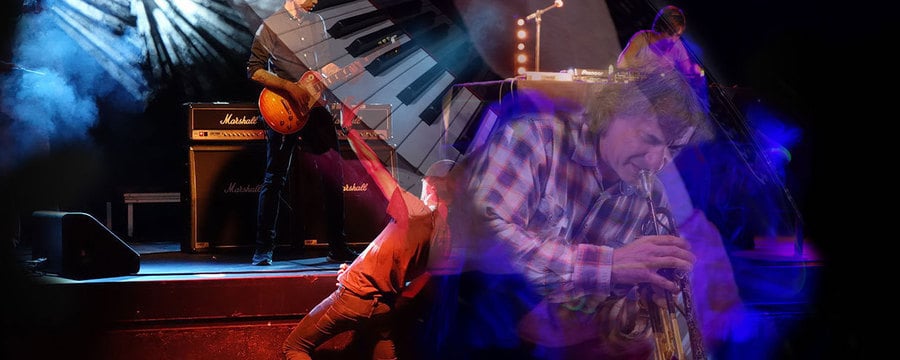How Do Bodily Metaphors Shape Our Experience of Music?
We will look on the details of how bodily metaphors shape our experience of music.
As we discussed in Studying music perception in the motion capture laboratory, most people have a strong sensation of physical direction when listening to short sounds that “move up” or “down”. This phenomenon comes about despite the fact that sound waves do not actually move up or down in physical space. So we are talking about a cognitive phenomenon. The American musicologist Arnie Cox writes about this phenomenon in music:
Verticality is not inherent in music (let alone in its notational representation); it is not there to be observed (heard) in the music, but it is instead a product of logical, metaphoric conceptualization (1999:50, emphasis in original).
Although there are no obvious directions of melody movement, most listeners feel directions in music. When the melody is moving ‘upwards’ or ‘downwards’ you get a feeling of spatial direction (2008:52).
We do not have a choice as to whether to acquire and use primary metaphor. Just by functioning normally in the world, we automatically and unconsciously acquire and use a vast number of such metaphors. Those metaphors are realized in our brains physically and are mostly beyond our control. They are a consequence of the nature of our brains, our bodies, and the world we inhabit (Lakoff & Johnson 1999:59, emphasis in original).
For young children, subjective (nonsensorimotor) experiences and judgments, on the one hand, and sensorimotor experiences, on the other, are so regularly conflated—undifferentiated in experience—that for a time children do not distinguish between the two when they occur together (Lakoff & Johnson 1999:46).
arise from the fact that we have bodies of the sort we have and that they function as they do in our physical environment (Lakoff & Johnson 1980:14).
memory structures created by generalizations made across seemingly similar situations in the environment (2000:102).
These affect perception and shape actions. In the same way that we use image schemas as points of departure for producing images when we are told stories, we use motor schemas to form motor commands when we experience music. A motor schema related to tempo in music will support a correspondence between fast rhythms and rapid body movements; a motor schema related to verticality in music will encourage vertical movements in response to pitch. This latter motor schema has been shaped through our encounter with sources of verticality in music. Arnie Cox (1999:18f) refers to ten such sources that possess both literal and metaphoric features:
- verticality in staff notation,
- verticality in vocal experience, and
- the propagation of sound waves
- “higher” and “lower” frequencies,
- the “higher” and “lower” perceived loudness levels of high and low notes,
- the “higher” and “lower” amounts of air used for high and low notes,
- the “higher” and “lower” magnitudes of effort needed for high and low notes,
- the “higher” and “lower” degrees of tension in producing high and low notes,
- the association of “high” levels of emotional intensity and pitch at climaxes, and
- the metaphoric state-locations of tones in pitch space.
Of these ten sources of verticality, the first three ones are based on literal vertical relations, while the seven last ones are based on metaphoric verticality.
Some of these sources are based on the experience of singing or playing certain instruments and are blended with other metaphoric associations of “high” and “low,” especially greater or lesser quantities/magnitudes (“more = up, less = down”) (Lakoff & Johnson 1980:15). Others are mainly bodily experienced and do not have to trigger any explicit knowledge before helping us to form motor schemas. In a culture where music is written (as notation) and actively learned, verticality in music likely arises from a mixture of rational and bodily knowledge. Still, there are many music lovers that do not know notation, but still experience verticality in music. Much classical music from the Romantic period (Chopin, Grieg) reaches an emotional climax of a piece with ascending melodies, accelerandos (increasing tempo) and crescendos. Similarly, producers of dance music or groove-oriented popular music constantly confront the notion of “high” and “low”. A build-up in a typical house track very often moves gradually from “low” sounds to “high” sounds to reach a climax in the track (see Solberg 2014).
The sound systems in clubs are usually organized with separate subwoofers and tweeters that are situated vertically, so that the “low” sounds come from the speaker beneath the one that produces “high” sounds. This vertical placement has little specific impact upon low frequencies, but high frequencies are generally more directional, so tweeters are often placed at ear hight (see Rossing et al. 2002:chap. 24). The loud volume level in clubs also intensifies how sounds resonate in our body. Low-frequency sound waves have a greater impact than high-frequency waves in how they are felt most noticeably in boneless body regions like the abdomen, which is obviously below our ears (and eyes), thereby contributing to the physical realization of a “low” frequency.
Club-oriented dance music very often uses a basic pattern where a bass drum and a hi-hat alternate. This alternation of “low” and “high” is not as obviously “vertical” as a continuous pitch movement either up or down, but in relation to a vertical movement pattern, the structural parallel is pivotal. The bass drum sound evokes the “low” position of verticality, while the hi-hat sound evokes the “high” position. The musical sounds may then be a transducer of verticality-information, from music to spatial orientation – from alternating “low” and “high” sounds transduced to analogous up-and-down movements.
References
- Cox, Arnie W. 1999. The Metaphoric Logic of Musical Motion and Space. Ph.D. Thesis, University of Oregon.
- Johnson, Christopher. 1999. Metaphor vs. Conflation in the Acquisition of Polysemy: The Case of See. In Cultural, Psychological and Typological Issues in Cognitive Linguistics: Selected Papers of the Bi-Annual ICLA Meeting in Albuquerque, July 1995, edited by M. K. Hiraga, C. Sinha and S. Wilcox. Amsterdam: John Benjamins: 155–169.
- Lakoff, George, and Mark Johnson. 1980. Metaphors We Live By. Chicago: University of Chicago Press.
- Lakoff, George, and Mark Johnson. 1999. Philosophy in the Flesh: The Embodied Mind and Its Challenge to Western Thought. New York: Basic Books.
- Rossing, Thomas D., F. Richard Moore, and Paul A. Wheeler. 2002. The Science of Sound. San Francisco: Addison Wesley.
- Snyder, Bob. 2000. Music and Memory: An Introduction. Cambridge, MA: The MIT Press.
- Solberg, Ragnhild T. 2014. Waiting for the Bass to Drop: Correlations Between Intense Emotional Experiences and Production Techniques in Build-up and Drop Sections of Electronic Dance Music. In Dancecult: Journal of Electronic Dance Music Culture, 6 (1), 61–82
- Vickhoff, Björn. 2008. A Perspective Theory of Music Perception and Emotion. Ph.D. dissertation, University of Gothenburg
Music Moves: Why Does Music Make You Move?


Reach your personal and professional goals
Unlock access to hundreds of expert online courses and degrees from top universities and educators to gain accredited qualifications and professional CV-building certificates.
Join over 18 million learners to launch, switch or build upon your career, all at your own pace, across a wide range of topic areas.
Register to receive updates
-
Create an account to receive our newsletter, course recommendations and promotions.
Register for free







